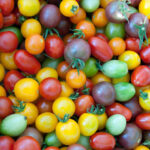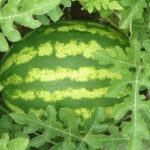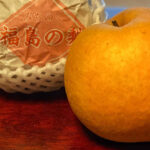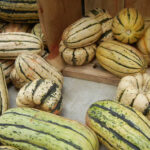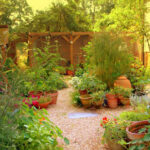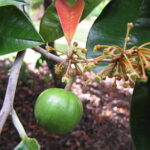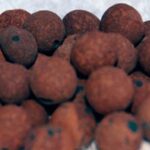Parsley is one of the most popular fresh herbs in the culinary world, and at the same time, it’s underutilized by many home cooks. To me, growing parsley in the culinary garden is an absolute necessity, as it can be used in almost everything!
It has a unique flavor profile that can be described as mildly bitter with an earthy flavor and is often used to balance savory dishes and brighten the flavors. Parsley has a subtle, refreshing scent and can be used in anything from soups and sauces to vegetables and meat-based dishes.
This plant belongs to the Apiaceae family and is harvested and consumed fresh or dried. In addition to adding distinct flavor and color to your favorite dishes, parsley also offers a number of health benefits. It’s loaded with minerals and vitamins, particularly vitamin K, which is beneficial for bone health and blood circulation.
While both curly and flat-leaf parsley taste almost the same, the flatter leaves are generally considered to be the more flavorful of the two. They’re also easier to chop into a fine minced form for easy use in cooking. Curly-leaf parsley is often included whole on the dinner place as an edible garnish.
Quick Care Guide
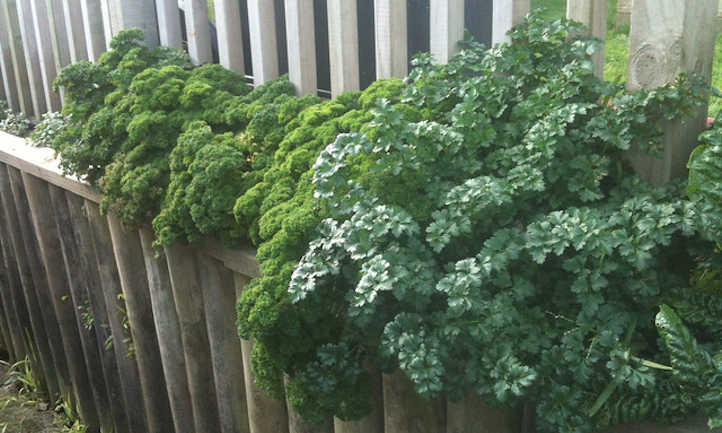
| Common Name(s) | Parsley, Italian parsley, curly parsley, Japanese parsley |
| Scientific Name | Petroselinum crispum |
| Days to Harvest | 70 to 90 |
| Light | Full to partial sun |
| Water: | About 1” per week |
| Soil | Loamy to sandy loam, well-draining |
| Fertilizer | 5-5-5 slow-release organic fertilizer |
| Pests | Aphids, carrot or celery fly larvae, caterpillars |
| Diseases | Powdery mildew, leaf spots, root rot |
All About Parsley

The botanical name of parsley is Petroselinum crispum. However, in the culinary world, it goes by the common name parsley. Bright green in color, it is usually grown as an annual herb worldwide.
But is parsley a perennial? Somewhat. It can be grown as a biennial, producing foliage in its initial season before dying back in the winter. In the spring of its second year, it then bolts straight to flower and seed production. Once parsley flowering concludes and it sets seed in that second year, it dies back for good. This is why most grow it as an annual plant.
So, what does parsley look like? Depending on the parsley varieties in question, the plant may have flat leaves or tightly curved leaves and green leaf stalks. Curly leaf parsley typically grows 8-12 inches in height, where Italian parsley (sometimes called Italian flat-leaf parsley) ranges from 18-24 inches tall.
Used by the ancient Greeks and Romans, parsley is native to the eastern and central Mediterranean. Because of its popularity and ease of growing conditions, the parsley herb has been widely naturalized worldwide.
Curly parsley is often grown for culinary ornamentation. Its flavor is comparable to flat-leaf varieties like Italian parsley, but the frilly leaves of curly leaf parsley herbs provide edible plating decoration.
Planting Parsley
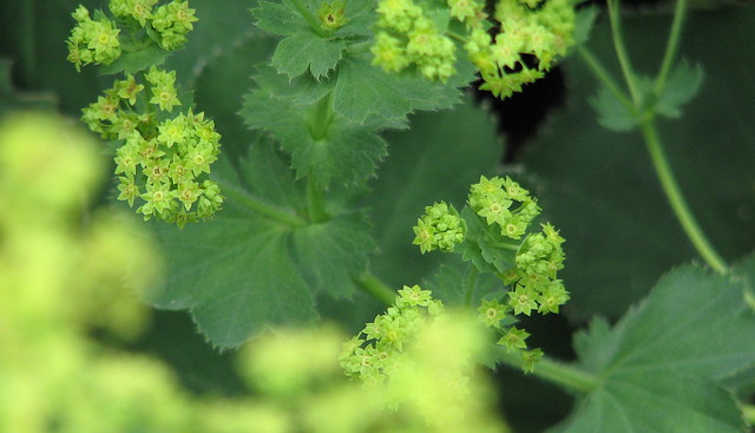
This is all easy when you know how to grow parsley. When to plant parsley can make a major difference in how much yield you’ll have when it’s fully-grown!
The best time of the year to plant parsley seeds is at least 3-4 weeks before the final frost. A slow starter, parsley can take that long just to germinate. An earlier start in colder climates also allows you time to acclimate your parsley to the outdoor temperatures.
Your soil temperature should be around 70 degrees Fahrenheit to aid in the initial germination of parsley seedlings. A seedling heating mat can help you grow parsley seeds. Aim for a warmer soil temperature for transplanting as well, as parsley roots will spread more readily in the warmer temperatures.
For taller flat-leaf varieties, grow parsley in a location that is sheltered from wind. These taller varieties can get wind-damaged easily. Curly leaf varieties sit lower to the ground and tend to be more resistant to a stiff breeze.
Container growing is an option when considering how to grow parsley. Keep in mind that your plants will need a reasonably deep container for good root development.
When you plant seeds, don’t plant parsley seeds too deep. Instead, plant parsley seeds no deeper than ¼”. If you plant seeds on the soil’s surface and gently press with a finger to indent the soil slightly, you can then brush a little soil over the top and you’ll grow parsley seeds just fine.
For transplanting, prepare your planting site in advance. Once the soil is amended to your liking, pop the plants in at the same level they at in their starter pot. Water them in well afterward to help them recover from the transplanting process.
Don’t let your young parsley linger in its starter pot for too long. Parsley develops a long taproot, and waiting too long can cause it to become rootbound.
Caring For Parsley Plants

Once established, parsley is a low-maintenance plant. Still, that doesn’t mean you can neglect it. Let’s go over how to grow parsley in the most optimal conditions.
Sun and Temperature
Grow parsley in full sun as well as partial shade. They require at least 5 hours of sunlight every day or high output plant lights to thrive.
The ideal temperature range for parsley is between 72-86 °F (22-30 °C). It can tolerate colder conditions up to light frost and thrives well in USDA growing zones from 5a to 9b.
Watering and Humidity
Established plants have moderate water needs. When you grow parsley, give it about one inch of water per week. Keep the soil moist. Refrain from overwatering as it can lead to root rot. Many find a soaker hose can provide a slow, deep watering of the sort parsley prefers.
Watering your parsley 2 to 3 times a week should be enough to keep the soil moist, even if watering needs increase during dry weather.
Soil
Parsley requires loamy, well-drained soil. Rich soil is ideal, although parsley seeds can be started in a standard seed starting mix and then transplanted into a richer soil blend. If you grow parsley indoors in a container, consider a high-quality potting mix. Outdoor in-bed growers may want to amend their soil with compost in advance to make sure their parsley grows well.
The ideal pH level at which to grow parsley is 6.0 to 7.0.
Fertilizing Parsley
A good, balanced 5-5-5 organic fertilizer is usually all that’s required for growing parsley in your garden beds. Apply fertilizer once or twice during the growing season.
You can grow parsley plants indoors in containers and give them similar fertilizing regimens. However, they may need a bit more fertilizer as there is less soil to hold onto the nutrients the plants need. Consider an extra fertilizer boost if your plants seem to need it late in the season.
Liquid fertilizers can work well for your parsley plants, particularly for those growing parsley indoors. Apply a dose of liquid fertilizer every six weeks throughout the growing season.
Pruning Parsley
If you’re wondering how to prune parsley, have no fear. Most of your pruning will actually happen for harvesting purposes. You can always harvest a little of the new growth from the plant if you need small amounts for cooking.
If you’re not trying to grow parsley for seeds, remove any unanticipated flower stems. This prevents the plant from setting seeds and keeps it focused on developing new foliage instead.
Parsley Plant Propagation
Grow parsley and propagate it by planting seeds. As it does take a while for parsley to germinate, the sow seeds method is slow but reliable. Starting from seeds also is the easiest method. Use the planting section to guide you when you sow seeds.
While it’s possible to propagate parsley through cuttings, it’s usually not very reliable. To do so, place fresh-cut parsley stems in a glass of water Change the water 1-2 times a day to make sure it’s fresh and clean. This method often doesn’t form as stable of a taproot, however, so starting from seeds is recommended.
Harvesting and Storing Parsley
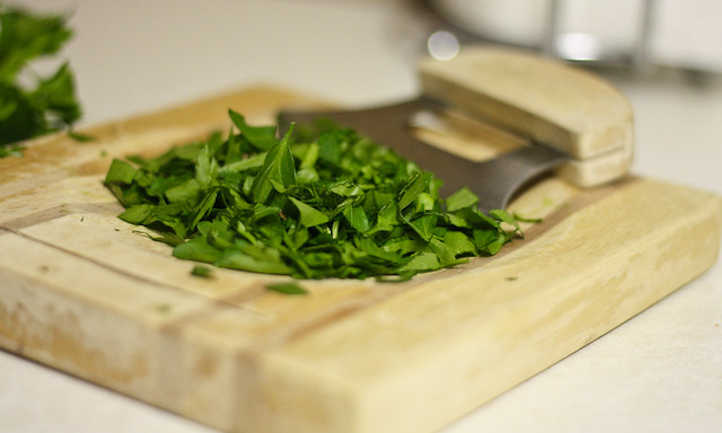
Whether you grow parsley (either curly or flat-leaf varieties) in your vegetable garden, harvesting fresh parsley is a rewarding experience. So let’s go over how to harvest parsley properly!
Harvesting Parsley
Begin harvesting parsley within 70 to 90 days after you plant parsley seeds. Wait until the stems have at least three segments before you cut. It indicates that the stem is ready for harvest.
Instead of cutting from the top, cut at the base of the stem to encourage growth. It will give you bushier plants and an improved yield. Also, it’s better to select longer, more mature stems from the outside of the plant, leaving the center stems alone.
As most treat parsley as an annual for good herb production, it’s recommended to harvest parsley by taking all the foliage from your plant at the end of the season. But to make sure it doesn’t go to waste, you’ll need to store that big harvest.
Storing
Parsley stores well in the refrigerator in one of two ways. You can place dry parsley stems inside a plastic bag, leaving the top open to allow for airflow. Alternately, you can place the stems in a glass of water, changing the water every day to make sure it remains fresh. Both methods will keep your parsley intact for 5-7 days.
For longer-lasting ways to store parsley, you have two options: freeze parsley or drying it.
Freezing is good if you want to maintain that fresh parsley flavor. Simply mince up your leaves and pack them into an ice cube tray, using just enough water to keep the leaves stuck together. Freeze solid, then take the parsley cubes and place them into a freezer storage bag.
Drying parsley should be done at cool temperatures whenever possible. Too much heat can degrade the flavor of the herb. You can hang-dry parsley in a paper bag, or use a low-heat dehydrator. Both methods work well. Once dry, crumble the leaves and place in an airtight container. Dry parsley will last for up to a year.
Troubleshooting

There are a few issues you might encounter with parsley growing. While they aren’t always severe, it’s important to treat them if they should arise.
Pests
Aphids may appear on the underside of the leaves or on the stems. They secrete a sticky substance called honeydew that can develop sooty mold. Pruning is the first line of defense against aphids. Typically an application of neem oil will kill off most aphids, but for a bad infestation use a pyrethrin spray.
Carrot and celery fly larvae both cause similar types of damage. In both cases, the larvae are hiding in the soil and will gnaw tunnels through the roots of your plants. Unfortunately, this includes parsley root. Consider adding a companion plant or two with your parsley. Allium family plants are employed in parlsey companion planting to deter these fly larvae. Also, covering your parsley with a floating row cover will prevent the flies from getting near the plants to lay their eggs in the soil around them.
The larvae of swallowtail moths are voracious caterpillars and will happily devour your celery leaves. Bacillus thuringiensis var. israelensis, commonly known as BT, is an effective method of eliminating multiple species of caterpillar.
Diseases
Powdery mildew is caused by fungi and appears as a powdery growth on the leaves. It’s a good idea to do regular applications of neem oil as a preventative, but if an outbreak occurs, remove mildew-coated leaves and apply an organic fungicide to the plant to kill off any remaining spores.
Assorted leaf spots can appear on parsley. While these aren’t always life-threatening to the plant, they can render the leaves unappealing or inedible. If symptoms of leaf spot persist after removing damaged leaves, use a copper fungicide to kill off the leaf spot fungi.
Soggy soil can create the perfect environment for the fungi that cause stem and root rot. Be sure your soil is well-draining. Ideally, it should stay moist but not muddy and should not be oversaturated.
Frequently Asked Questions
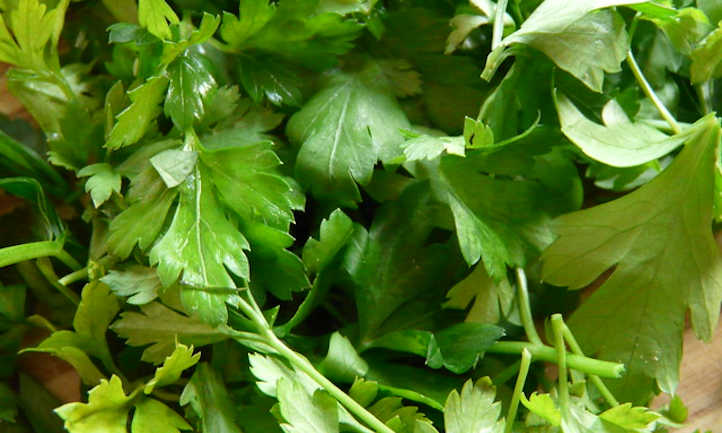
Q: Does parsley regrow after cutting?
A: Parsley does regrow after cutting during its first year. To ensure it has enough foliage to regrow, avoid cutting the center of the plant, instead taking from the outside stems.
Q: Does parsley come back every year?
A: Parsley is technically a biennial plant. However, the second year it bolts straight to seed rather than producing much foliage. Most people opt to grow parsley as an annual.
Q: Why is my parsley plant turning yellow?
A: There are two potential reasons, both of which are related to watering. Overwatering can cause the plant to yellow and droop. It also can promote the development of fungal root rots. Avoid overwatering and make sure your herb garden soil drains excess water away.
Q: How many times can you harvest parsley?
A: It depends on how much you’re harvesting at a given point. You can do cut and come again harvesting methods to regularly harvest small quantities and are only limited by how fast the plant grows back.
Q: How long do parsley plants last?
A: As short-lived perennials in most areas, they have a life span of 2 years.
Q: Should I let my parsley gone to seed?
A: While you can do this to allow the plant to produce seed and/or self-seed, if you want those tasty leaves, remove the flowers as soon as they appear to prevent a change in its flavor.
Q: Should I let my parsley flower?
A: While you totally can, see my answer to the last question.


